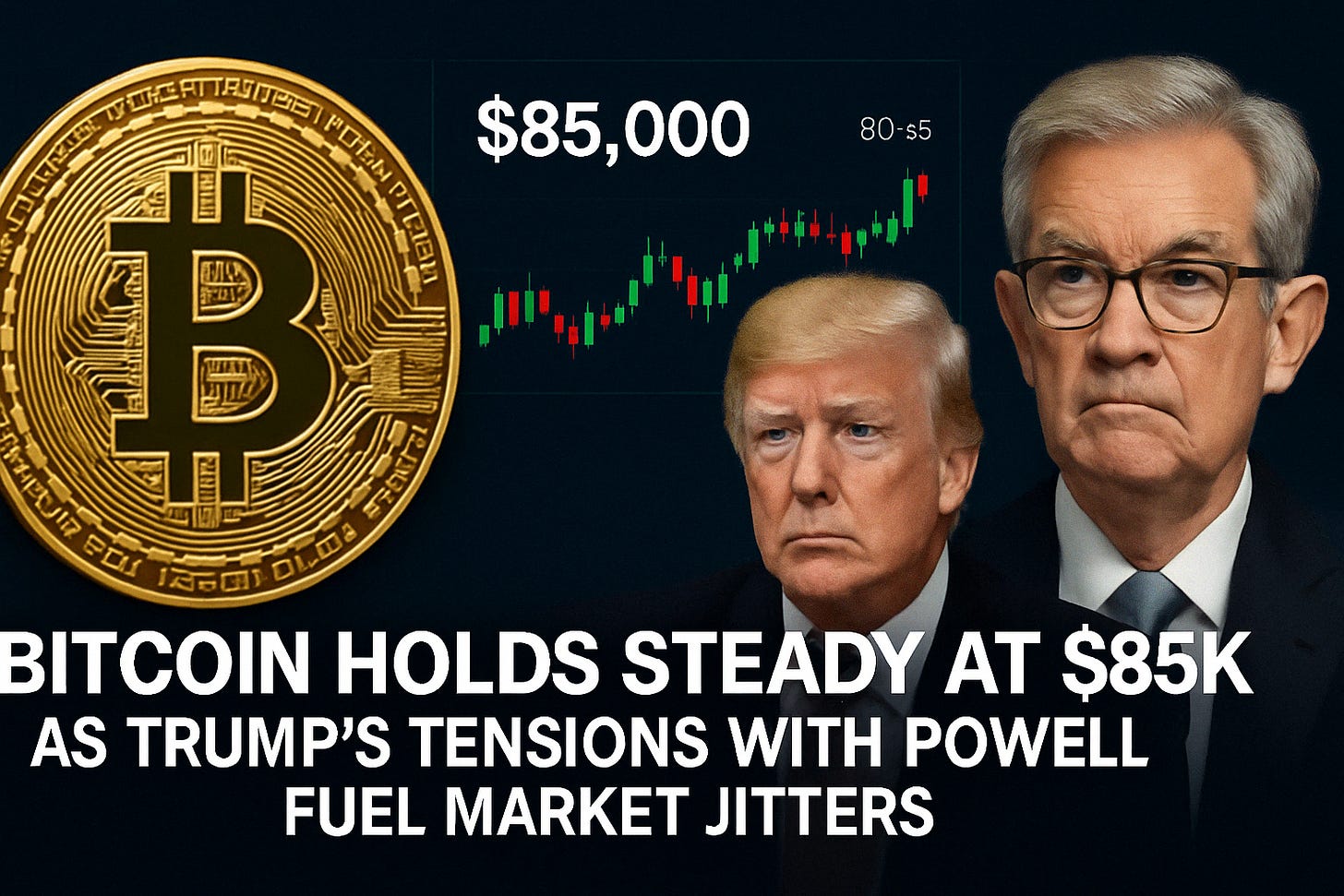Bitcoin Holds Steady at $85K as Trump’s Tensions with Powell Fuel Market Jitters
“While the Fed wobbles, Bitcoin doesn’t flinch.”
Bitcoin is once again at the center of macroeconomic storm clouds—this time sitting steady at $85,000 as tensions escalate between President Donald Trump and Federal Reserve Chair Jerome Powell. While the broader financial world wades through uncertainty, Bitcoin continues to play its role as a hedge against fiat chaos.
On April 17, Bitcoin price hovered near the $85,000 mark, resisting downward pressure even as the Philadelphia Fed manufacturing index plunged to a two-year low of -26.4. Meanwhile, the “prices paid” index soared to levels not seen since July 2022, signaling a return of the dreaded stagflation—a toxic mix of economic stagnation and rising inflation.
Adding to this economic stew is a brewing political clash. According to reports from the Wall Street Journal, President Trump has been privately discussing the dismissal of Powell, raising fresh questions about central bank independence. Despite Powell’s insistence that he intends to serve his term until May 2026, speculation has intensified with former Fed Governor Kevin Warsh rumored to be waiting in the wings.
While traditional markets appear spooked—the S&P 500 and Nasdaq barely moved—Bitcoin and the broader crypto market have shown surprising resilience. Assets like Bitcoin Cash (BCH), NEAR, and AAVE led gains in the CoinDesk 20 Index, suggesting that some investors are rotating into digital assets as a safe haven.
Even Wall Street’s fear gauge, the VIX, remains elevated, hinting that uncertainty is far from priced in. Traders on crypto options platform Deribit are navigating this dual reality with two-sided bets: while some are bullishly targeting BTC at $90K and even $100K by June, others are hedging with puts at $80K, anticipating short-term turbulence.
This dual strategy speaks to a growing awareness: we are not in a normal market. Trump’s tariff policies, which Powell criticized for accelerating inflation, risk entrenching stagflationary conditions in the U.S. economy. And in an environment where fiat currency purchasing power is under siege, Bitcoin shines.
Across the Atlantic, the European Central Bank cut interest rates for the seventh straight time, warning of declining growth. As central banks globally play monetary tug-of-war—tightening to tame inflation, easing to save growth—the appeal of a decentralized, fixed-supply asset like Bitcoin becomes even more obvious.
What we’re witnessing is a decoupling. While fiat economies falter under political tension and policy contradictions, Bitcoin is beginning to behave more like digital gold—less reactive to day-to-day noise, more sensitive to long-term trust erosion in fiat.
In a world where the Fed’s independence is in question and stagflation looms, Bitcoin’s stability around $85K isn’t just price action—it’s a statement.
As traditional institutions wobble, the question investors must ask isn’t “Why is Bitcoin holding up?” but “What happens when people stop trusting fiat altogether?”


